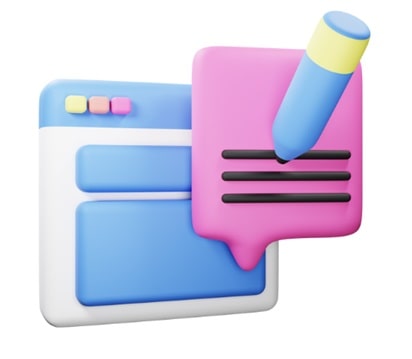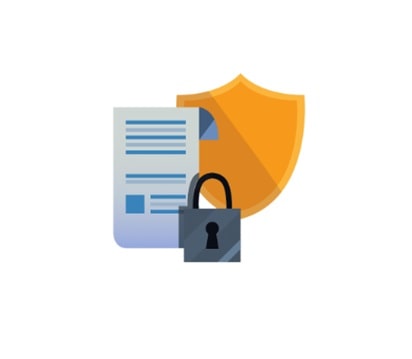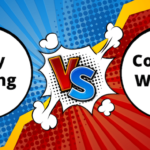Online writing covers everything from blogging to creating marketing content. Creating content that is utilized in the online world – in any way – comes within the definition of this type of writing.

As is the case with any type of content creation, there are certain ethical challenges that one has to face in online writing as well. For instance, there are certain things that writers have to avoid doing in toto, and there are certain things that they have to do in a specific way – otherwise, they can become ethical risks.
In this post, we’re going to look at some of the main and major ethical challenges people can face in online writing. We will also look at some ways in which those particular challenges can be addressed and overcome.
Table of Contents
1. Ethical Challenge # 1: Writing Plagiarism
One of the biggest challenges that can trouble a lot of writers and online content creators is plagiarism. Plagiarism is basically the act that involves someone taking and utilizing content written or authored by another person/source without acknowledging them.

In online writing, plagiarism can become an ethical challenge in different ways. For example,
- People can be tempted to simply take content from a source and utilize it for themselves without giving credit. The reason for this can simply be a lack of skill on the plagiarizing party’s part (due to which they can’t create that content themselves), or it may just be due to laziness.
- The bigger challenge that plagiarism can pose is when it occurs accidentally and unintentionally. Accidental plagiarism – as it is called – is said to occur when someone writes a piece of content that happens to coincidentally match some already existing material.
Although there is quite a bit of difference between accidental and deliberate plagiarism in terms of how it is committed, the consequences for both are the same.
How can this ethical challenge be navigated?
Plagiarism has to be avoided in all types and instances of online writing. Let’s talk about some ways in which that can be done:
- For starters, you should not plagiarize anything directly from a source – even if it seems insignificant and inconsequential at the time. Even small amounts of plagiarism can be harmful and can pose ethical risks. That is pretty much how you can “navigate” through the issue of deliberate plagiarizing. Just don’t do it.
- On the other hand, dealing with accidental plagiarism can be trickier. For one, you don’t even know if it’s there until you run a plagiarism check on it. To avoid and deal with accidental plagiarism, here are some things that you can do:
- To avoid committing this type of plagiarism, you should focus on writing in your own style and doing your research from as many different resources as you can. When you spread out your research and use your own style, you reduce the chances of unknowingly mimicking someone else. In doing so, you also lessen the chances of committing plagiarism.When you’re done with writing the content, you should first use a plagiarism checker on it so that you know if there are issues in there or not
- If there are, you can either remove those parts (that are showing up as plagiarized), or you can paraphrase them. Paraphrasing is an effective solution to accidental plagiarism since it changes the phrasing/wording of the content and eliminates the resemblance that caused the problem in the first place. You can paraphrase content easily nowadays by using an online paraphrasing tool. There are a lot of them that you can find on the Internet.
2. Ethical Challenge # 2: Using Images from Online Sources Without Accreditation
Although this is also a type of “plagiarism,” we think it’s important to mention it separately since it pertains to images rather than written content.
When you’re doing online writing, you have to be careful about the images you use. You can’t simply search a query on Google and then copy an image from the results.

A lot of images in the “Images” section are usually protected by copyright laws. If you use them, you can get into legal trouble. And even if there is no copyright, using an image (that is not up for free use) without giving it credit can make you look bad and cause you other types of trouble.
The reason that this becomes a “challenge” is that adding images to content is important, and a lot of people may be unaware of the options that they can utilize for this. Due to this, they can end up using images that they are not supposed to.
How can this ethical challenge be navigated?
There are a few different ways in which this ethical challenge can be navigated:
- The simplest way to deal with this issue is to use stock-free images from sites like Pexels.
- Another way to use images in your content without worrying about copying stuff is to make your own using graphic design software.
- If there is a need to take images from a source, you should either get permission from them or you should elaborately cite them as the original source.
3. Ethical Challenge # 3: Using Generative AI Where Prohibited
Online writing – as we mentioned above – covers all type of writing that is done for “online” purposes. This could also involve instances where a writer is asked by someone (a client) to create content according to specific guidelines.

In situations like this – where different instructions are provided – following said instructions is important and necessary. Among the different guidelines that can be somewhat hard to adhere to and easy to violate is the use of generative AI where prohibited.
In other words, some clients and companies can ask people to write content for them without using AI so that the content is natural and original. Here, many writers can do the unethical act of using generative AI and altering the content in such a way that it looks human-written.
This sort of stunt is unethical and it is something that everyone has to refrain from doing.
How can this challenge be navigated?
In a lot of cases, the choice to use generative AI can be due to a lack of knowledge or understanding on the writer’s part. Since they don’t have the right knowledge to write the content, they can delegate the task to a tool instead.
A constructive yet ethical way to utilize generative AI in this type of scenario is to use it for research and idea garnering. In other words, you can use it to lay down the base for your content and then write the same yourself.
Conclusion
And that brings this post to a close.
Writing content while staying within ethical limits can be tough at times, but it is necessary and important. We have talked about some of the ethical challenges that writers can face along with the solutions that they can use to overcome them.









